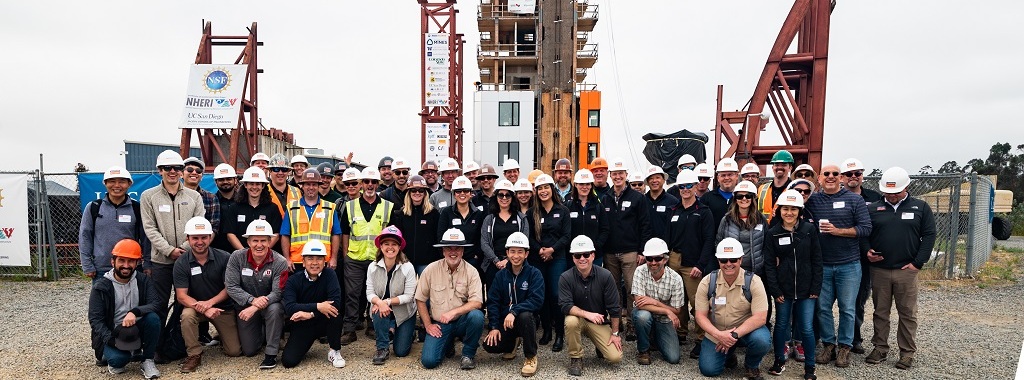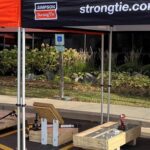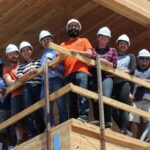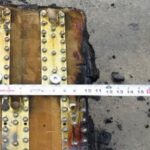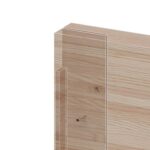As a research partner in the National Hazards Engineering Research Infrastructure (NHERI) TallWood project, Simpson Strong-Tie participated in a series of earthquake shake table tests conducted at the University of California, San Diego (UCSD).
Funded by the National Science Foundation (NSF) and led by Dr. Shiling Pei of the Colorado School of Mines, the NHERI TallWood project simulated a series of large seismic events and their effects on a full-scale, 10-story mass timber building — the tallest building ever tested on a shake table. With more than 100 tests completed, Steve Pryor, Senior Manager of Testing and Research Operations at Simpson Strong-Tie, shared his insights about the project.
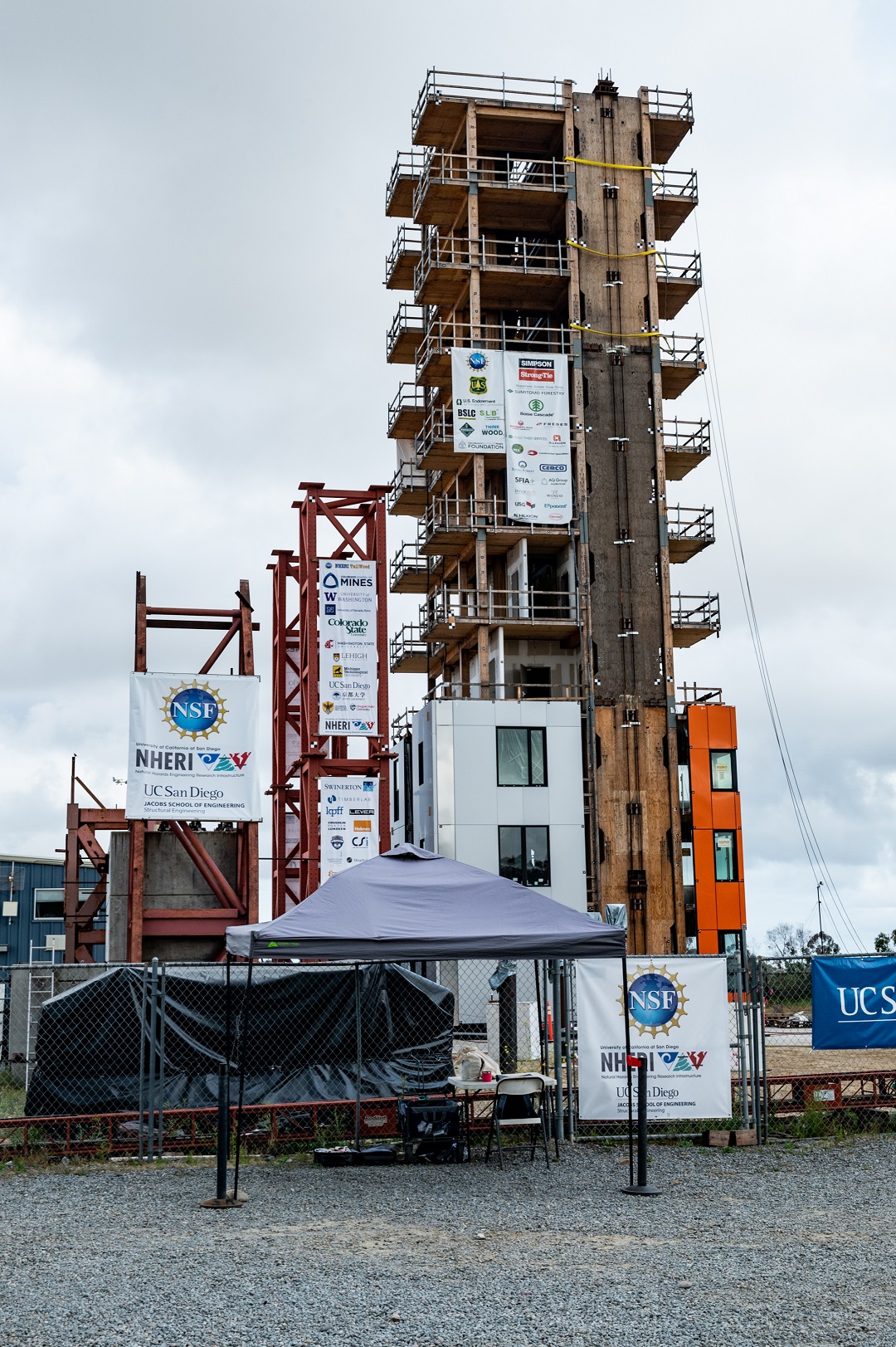
Q: What was the main research objective of NHERI TallWood?
A: The objective of the NHERI TallWood project was to develop mass timber seismic lateral-force-resisting systems for tall wood construction. More specifically, to develop resilient seismic design methodologies for tall timber buildings in earthquake-prone regions.
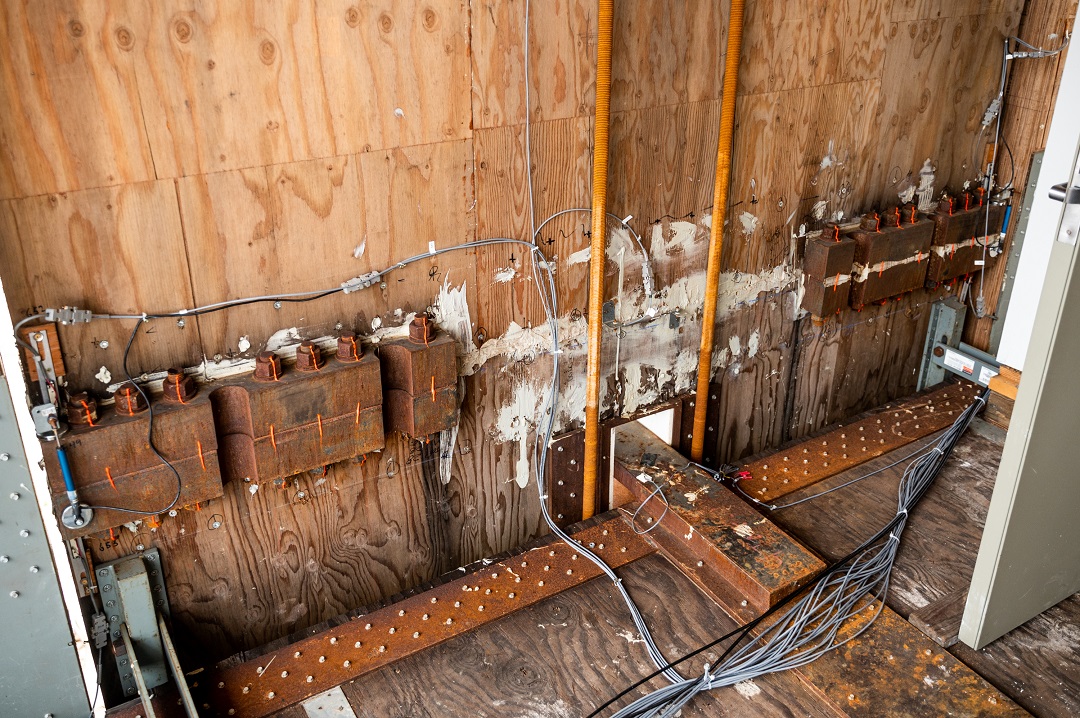
Q: How were the earthquake shake tests conducted?
A: A series of tests were conducted at the Englekirk Structural Engineering Center at UCSD. This is where the world’s largest outdoor shake table is located, along with one of the two biggest earthquake simulators. The shake table tests simulated motions that were recorded during historic earthquakes and covered a range of magnitudes from four to nine.
Q: How was the mass timber structure designed?
A: The 10-story wood building was designed with resilient post-tensioned mass timber rocking walls for the lateral system and utilized two walls in each principle direction. This new system is designed to minimize damage from design-level earthquakes and be quickly repairable after rare earthquakes. We utilized a resiliency-based design methodology that’s intended to help ensure the safety and durability of tall timber buildings in seismic zones.
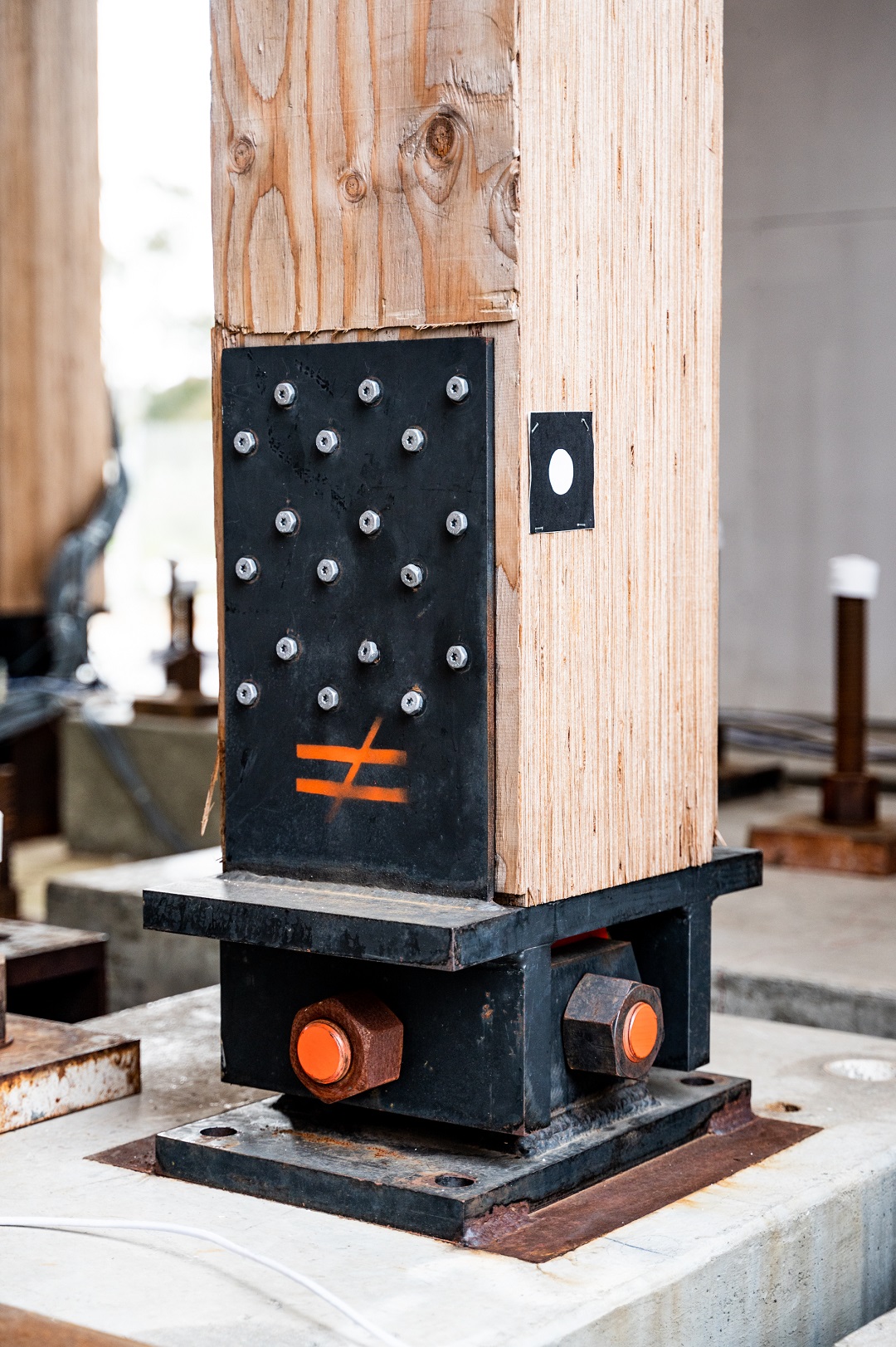
Q: What was the role of Simpson Strong-Tie in the project?
A: We’ve been working as a long-term research and project partner on NHERI TallWood for many years, along with a consortium of universities and other industry collaborators. In terms of innovation, we developed a special column-base connection that pivots around both axes simultaneously. It can pivot in one direction or the other, or you can swing it around in an orbit, and there’s no damage happening to the connection at all. So that was a key connection to allow this structure to go through all of the earthquake tests. It was designed to sustain all of this movement under very heavy loading and not get damaged.
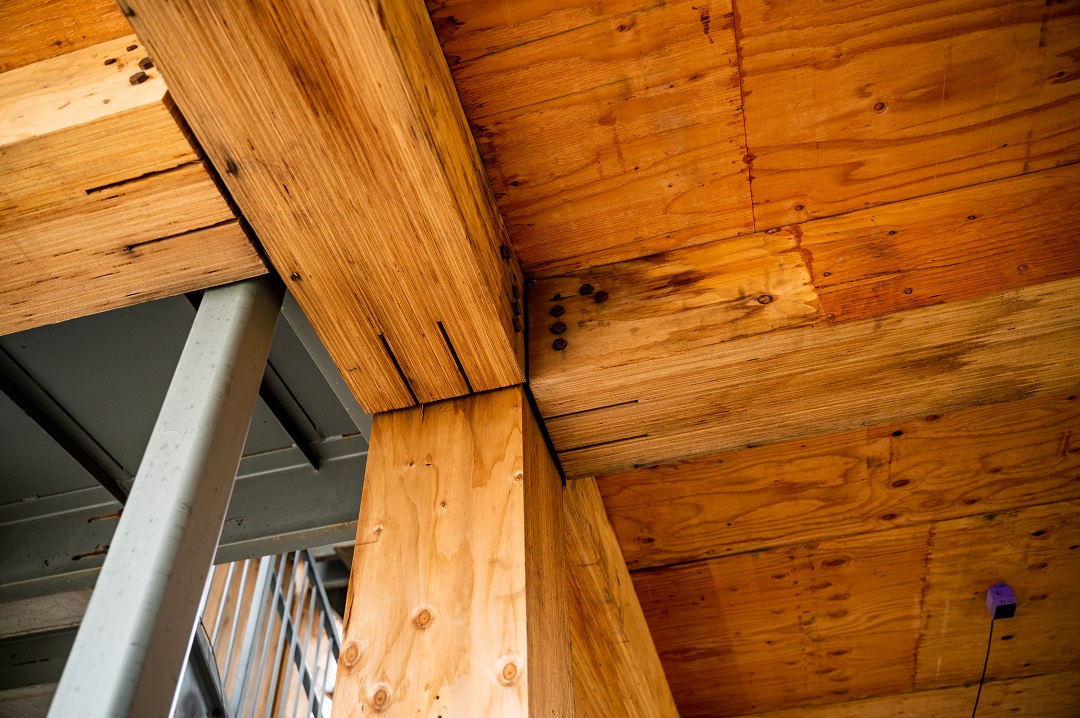
The other special connection we developed was the beam-to-column connection. It’s a double knife plate connection that allows the columns and beams to move back and forth without binding. The connection still transfers all the gravity load that it has to transfer, and it still holds the column very tightly. So, it’s performing two key functions — transferring gravity loads and providing stability for the columns — all while allowing the whole thing to move and not bind up during an earthquake. That was the key.
Simpson collaborated with the project team to design and test nonstructural components, too, such as the exterior façade, interior walls and stairways. The objective here was to ensure they could withstand the relative movement between stories.
We also specified and donated a wide range of our products, including mass timber fasteners, angled washers, diaphragm spline straps, cold-formed steel connectors and our anchor tiedown system rods.

Q: Now that NHERI TallWood testing has concluded, what are the results?
A: At a high level, this new type of lateral-force-resisting system has proven to be perhaps one of the most structurally resilient building systems ever developed. At a detailed level, we’re still extracting data. Right now, we’re in the process of writing a paper for the Journal of Structural Engineering, which is published by the American Society of Civil Engineers. The lead author, Dr. Shiling Pei of the Colorado School of Mines, is the Principal Investigator of the NHERI TallWood project. When published, the paper will have more detailed findings from the research.
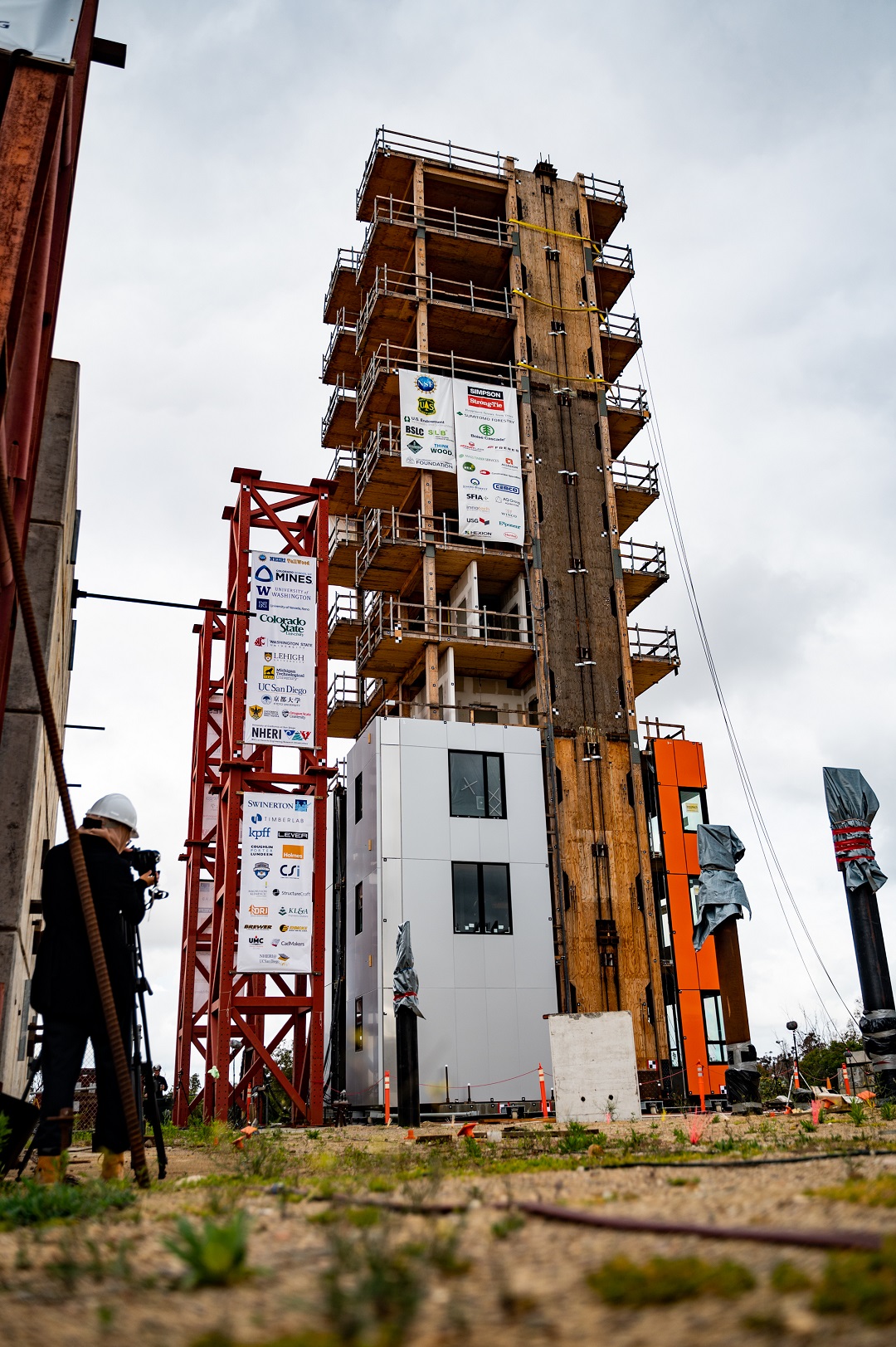
Q: How will this research be used going forward, generally?
A: In order for a new type of building technology to be widely used, it needs to find its way into the building code as an approved system. Now that we’ve successfully demonstrated how it works and how it can be put together, the effort to move this technology forward and get it into the building code is just starting. The hope is to try to get it into the building codes by the 2028 version of the code. Also, at Simpson, the test results have already informed some new product development.
Q: What is the long-term outlook for mass timber in tall buildings?
A: Based on these tests, I would say the outlook is very good. There’s a lot of aesthetically pleasing things about mass timber that, as humans, we just interact with better than, say, another raw building material that might be left exposed in a building.
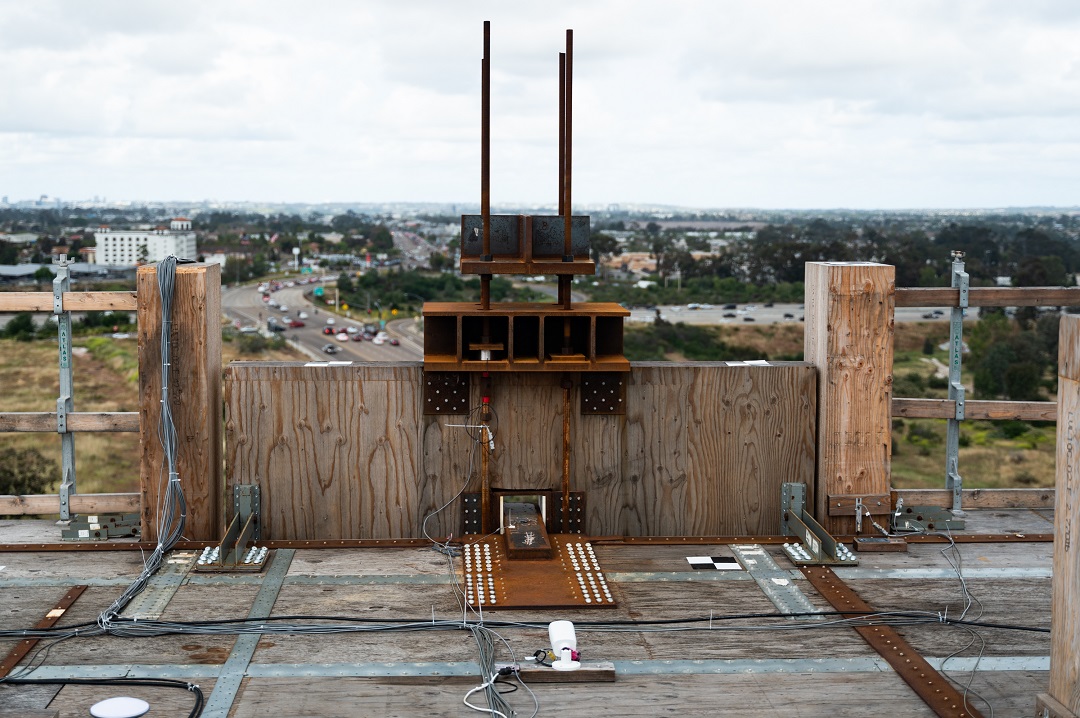
Q: How will this research influence the way Simpson Strong-Tie supports mass timber building designers?
A: Being a part of the TallWood project has given us a unique, hands-on perspective as to some of the real-world design challenges. It has allowed us to focus on developing connections that address those challenges. In terms of how it affects our customers, like a lot of the research we do, it instills confidence in them that we’re a leader in this space and that we’re dedicated to testing and research to develop the best products we can for these applications.
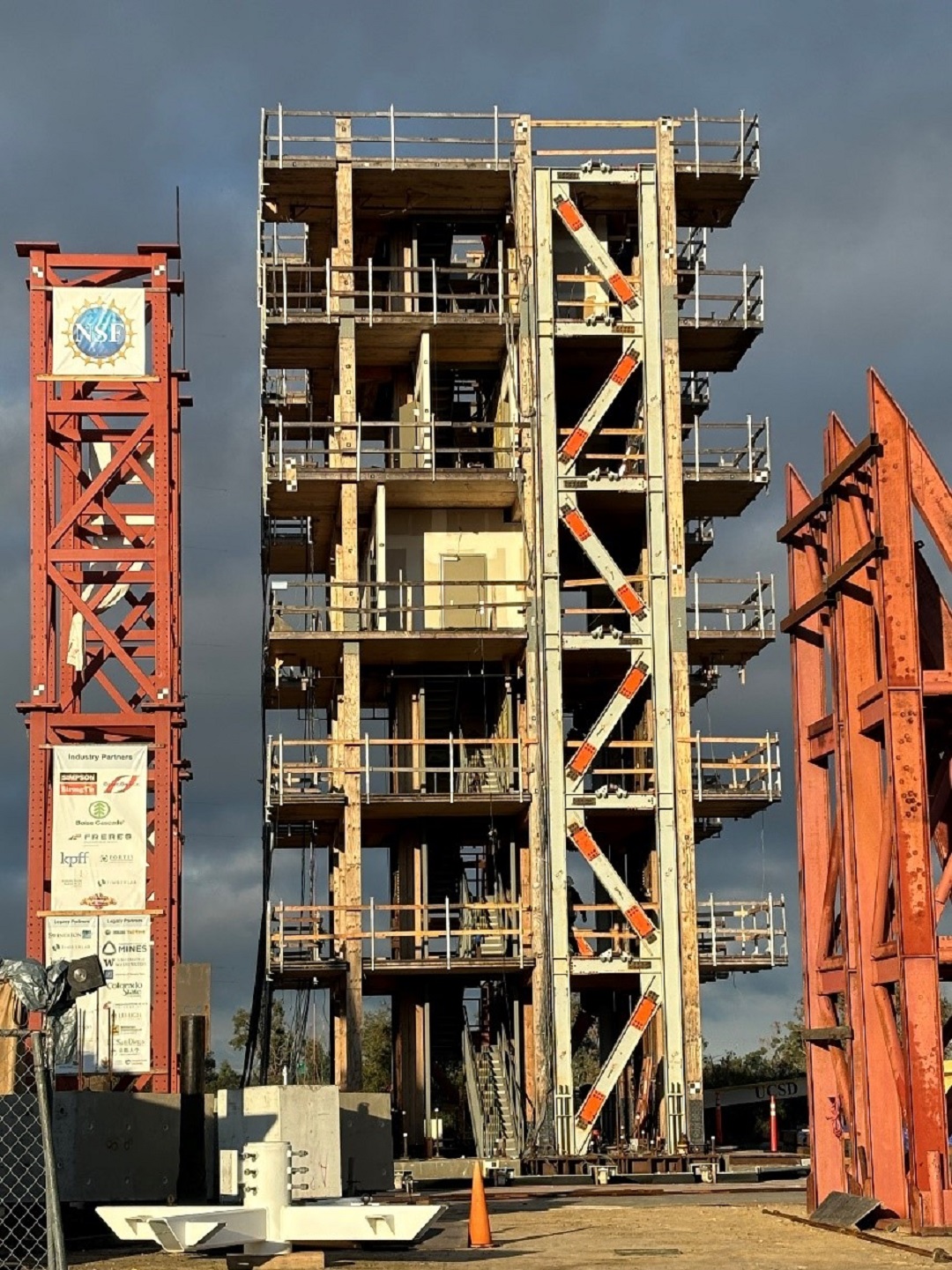
Q: What’s next for the NHERI TallWood project?
A: The TallWood building has been given a “haircut” and is now six stories tall instead of 10. The next research project for the structure is known as Converging Design. It’s being led by Professor Andre Barbosa at Oregon State University, and we’re going to continue participating in testing the six-story building. In Phase III, we’ll test our resilient steel frame technologies by providing two complete six-story-tall frames to anchor the north-south direction of building movement, while the east-west direction remains restrained with post-tensioned mass timber rocking shear walls.
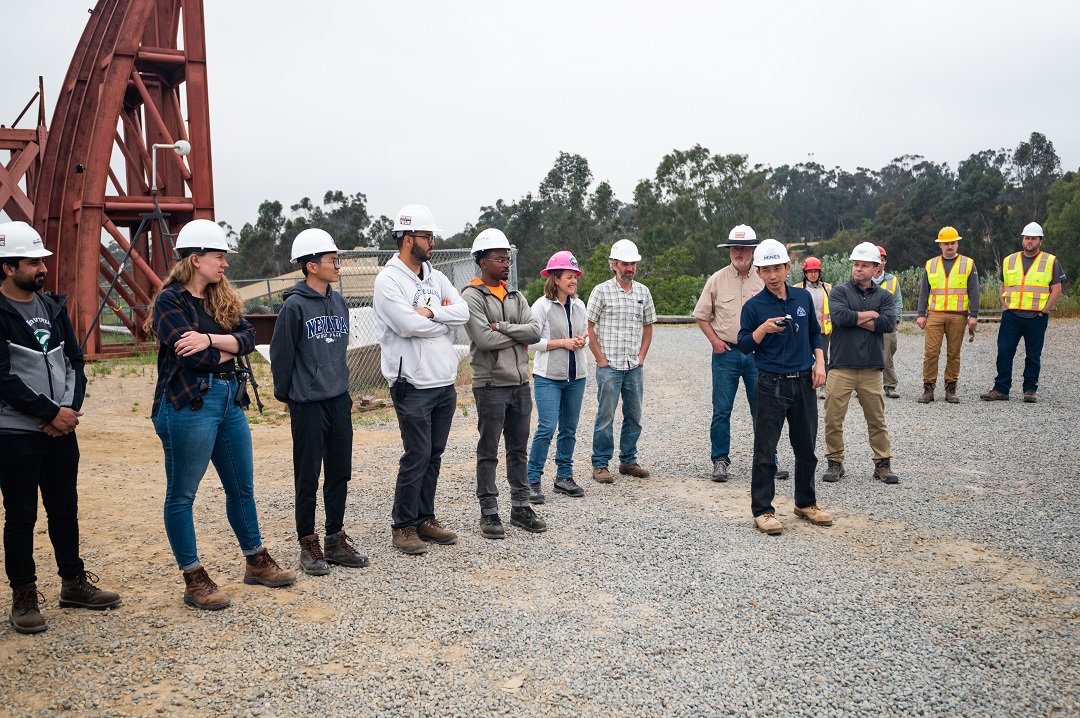
Q: What does this type of industry research say about the value of teamwork?
A: These projects don’t happen without a fantastic amount of collaboration and cooperation. The Colorado School of Mines led the research, and our project collaborators included Colorado State University; the University of Nevada, Reno; the University of Washington; Washington State University; and the University of California, San Diego. We also had about ten graduate students working toward their Ph.D. on this project — attaching instruments, collecting data and running a lot of numerical simulations. Delivery and integration also required an extreme amount of cooperation within Simpson. Not just the engineers doing the analyses and creating designs, but also the people in our laboratories who were testing the prototypes. We also had product managers interfacing with manufacturing personnel to get these special, customized parts made and delivered to the jobsite. So, everyone from R&D to the welders, our teams in Riverside and Stockton, California, the people in shipping — everyone was integral to the success of the project. We didn’t have a normal product cycle time to develop all of this work. There was a massive amount of coordination, and the company should really be proud.
The video above shows actual footage of the earthquake shake table tests, narrated by lead researcher Dr. Shiling Pei, Associate Professor at Colorado School of Mines, along with project partners from Colorado State University and Simpson Strong-Tie. The NHERI TallWood project is funded by the NSF and the US Forest Service (USFS).
Simpson Strong-Tie provides solutions that help people design and build safer, stronger structures. To learn about earthquake preparation and safety for your home, and to download a free seismic retrofit guide and seismic retrofit detail sheet, visit strongtie.com/seismic.
For the latest information on our growing line of mass timber products, visit strongtie.com/masstimber.

